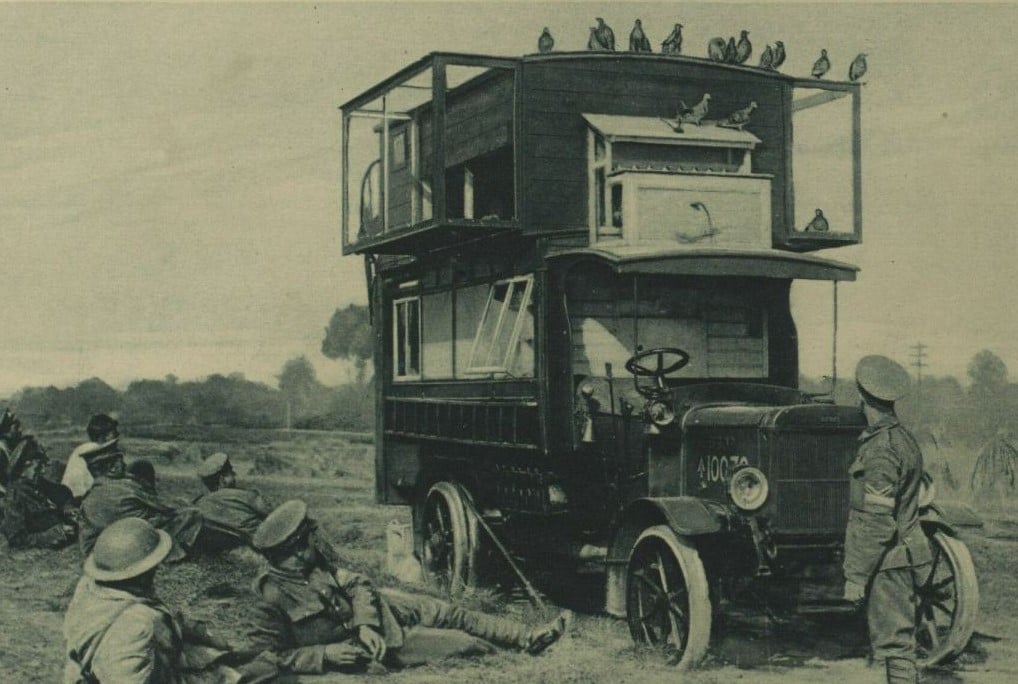 A mobile pigeon loft, to which the pigeons returned with messages from the trenches. Illustrated London news, 1 December 1917, p 672
A mobile pigeon loft, to which the pigeons returned with messages from the trenches. Illustrated London news, 1 December 1917, p 672
It may be hard to believe today, but the modest pigeon performed an heroic role as a messenger during World War I. Whilst telephone, field telegraph, radio and despatch riders were the usual means of communication, when these methods broke down during battle, the army and navy relied on homing pigeons for urgent communications.
 A despatch rider leaves the signal office and headquarters of the 4th Australian Divisional Signalling Company at Vaulx, France, with a basket of carrier pigeons in 1917. Photo courtesy of Australian War Memorial, AWM E00646
A despatch rider leaves the signal office and headquarters of the 4th Australian Divisional Signalling Company at Vaulx, France, with a basket of carrier pigeons in 1917. Photo courtesy of Australian War Memorial, AWM E00646
Pigeons were especially valuable when telegraph lines were cut or when a garrison was seized by the enemy. Pigeons also had the advantage that their source could not be tracked, unlike radio communications.
They were fast as well: the speed of a well-trained homing pigeon was remarkable. A good one could cover 150 miles (241 km), travelling at an average speed of a mile (1.6 km) a minute.
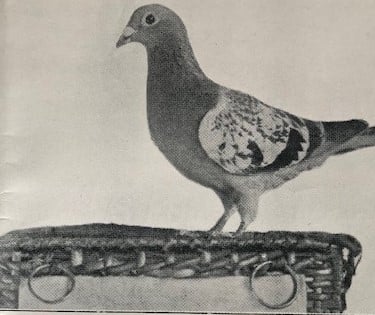 The Dundee Life-Saver, pictured left, flew 22 miles (35.4 km) in 22 minutes. The message carried saved two airmen’s lives. 1
The Dundee Life-Saver, pictured left, flew 22 miles (35.4 km) in 22 minutes. The message carried saved two airmen’s lives. 1
Pigeons were used in a variety of services: by the navy and merchant marine, by airmen, for espionage, in the trenches and even by tanks.
Early in the war, before wireless communication was introduced, the British used pigeons to send SOS messages from their minesweeping trawlers.
The British Pigeon Service was established and from March 1916, pigeons were sent to the Western Front. British war records show that 95 per cent of the pigeons succeeded in getting through with their messages.
 Pigeons were also used for espionage purposes. An agent would parachute over German-occupied areas of Europe with a basket of pigeons attached to his back, leaving the basket in areas friendly to the allies.
Pigeons were also used for espionage purposes. An agent would parachute over German-occupied areas of Europe with a basket of pigeons attached to his back, leaving the basket in areas friendly to the allies.
You can see an example in the photo on the right. 2
Local people could send useful information in the small cartridges attached to the pigeon’s leg. The pigeon would then return to its home loft. Both the agent and the civilians risked being shot if caught by the Germans. Sometimes, the Germans substituted their own carrier pigeons, meaning that any messages would go to their headquarters.
Carrying messages was dangerous work for the pigeons. If spotted by the enemy, they became a ready target. Pigeons often had to fly through deafening artillery fire or poisonous gas to deliver their messages.
The pigeons saved many lives. A pigeon messenger was used by Thomas Crisp, the skipper of the trawler ‘Nelson,’ as he lay fatally wounded by a German shell. He sent the message: ‘Nelson being attacked by submarine. Skipper killed. Send assistance at once.’ The pigeon delivered its message in time for help to reach the crew, although the skipper did not survive. He was awarded a posthumous VC. The pigeon was wounded in one wing by German shrapnel.
On the Western Front, the birds were transported by specially adapted motor lorries containing ‘lofts’ to staff headquarters behind the front line. Despatch riders then took them to the trenches in crates strapped to their backs. At the front, the pigeons were released with messages to fly ‘home’ to their motor-lorry ‘lofts,’ which remained at battalion headquarters. The mobile lofts could be moved quickly to other locations. By the end of the war, 22,000 pigeons were serving British forces, looked after by over 400 pigeoneers.
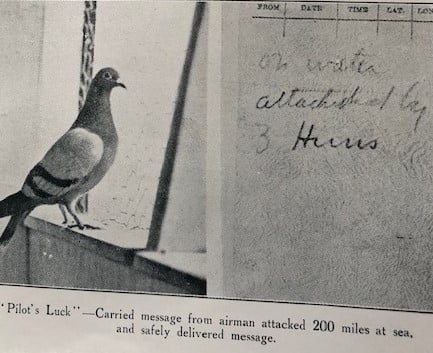 The pigeon, Pilot’s Luck, saved an airman who had been attacked 200 miles (321 km) out to sea.3
The pigeon, Pilot’s Luck, saved an airman who had been attacked 200 miles (321 km) out to sea.3
During the Battle of the Somme, the French used 5,000 pigeons, with only two per cent failing to reach their destination. All essential messages were sent in duplicate by other birds. The French awarded the Croix de Guerre, the Croix Militaire and the Légion d’Honneur to those pigeons who delivered their messages heroically through enemy fire when help was desperately needed.
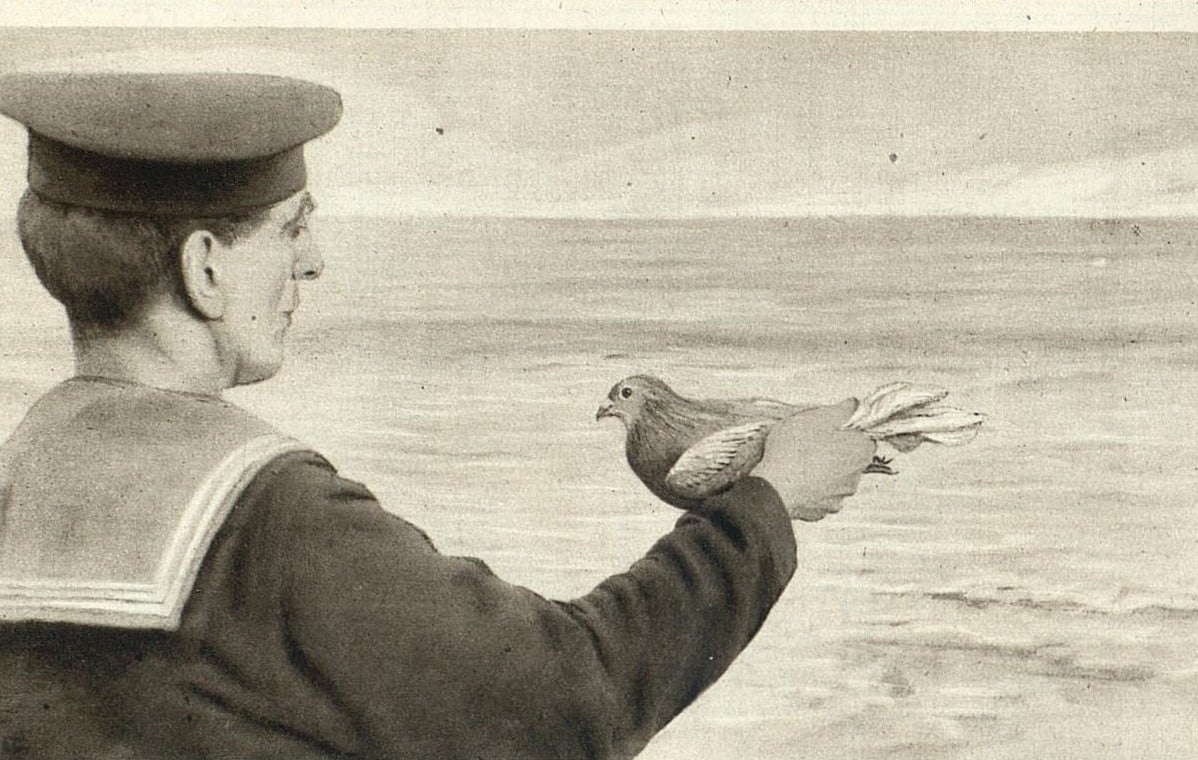 The British Navy used pigeons on smaller craft not equipped with wireless communications. Illustrated war news, 20 March 1918, p. 22
The British Navy used pigeons on smaller craft not equipped with wireless communications. Illustrated war news, 20 March 1918, p. 22
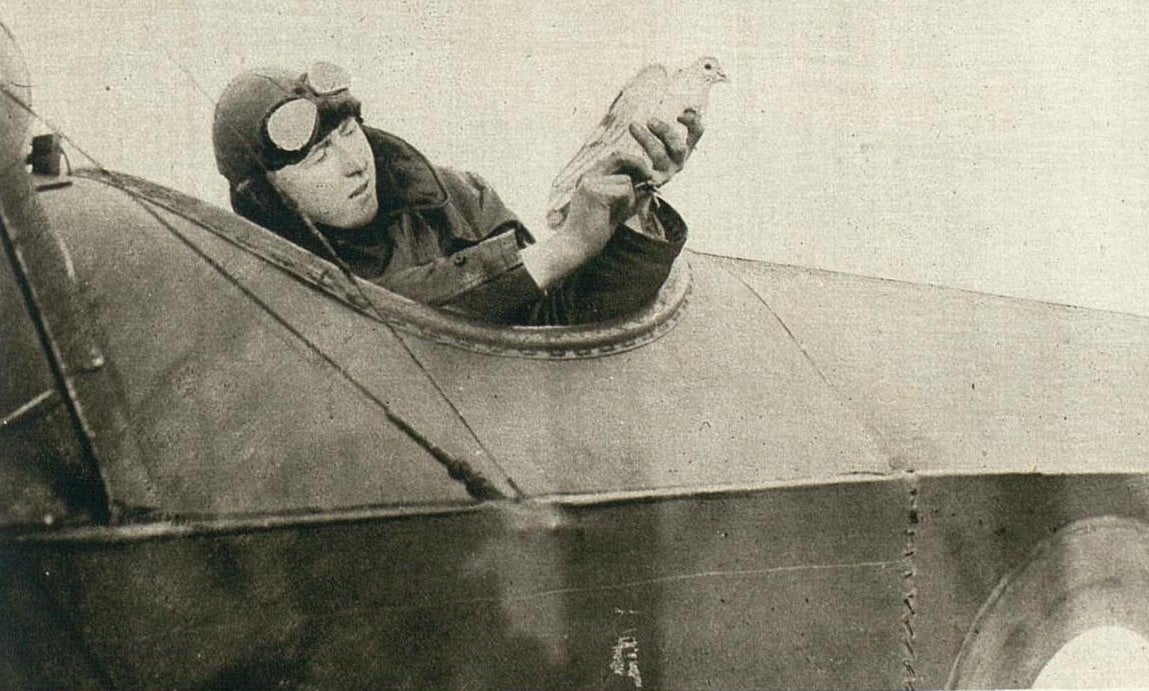 Releasing a pigeon from a plane. Illustrated war news, 20 March 1918, p. 23
Releasing a pigeon from a plane. Illustrated war news, 20 March 1918, p. 23
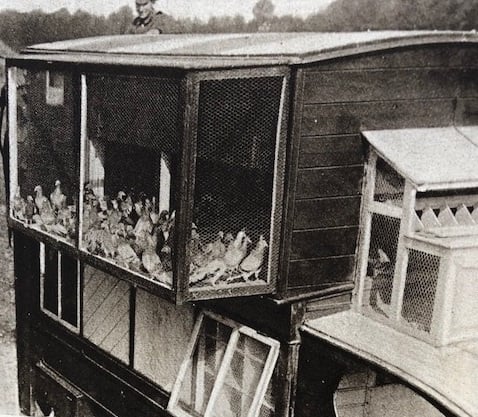 Pigeons in their motor-lorry “lofts” at Western Front headquarters. Illustrated war news, 28 November 1917, p. 8
Pigeons in their motor-lorry “lofts” at Western Front headquarters. Illustrated war news, 28 November 1917, p. 8
 A despatch rider takes pigeons to the trenches in a crate, while the pigeon lorry remains at headquarters. Illustrated war news, 28 November 1917, p. 8
A despatch rider takes pigeons to the trenches in a crate, while the pigeon lorry remains at headquarters. Illustrated war news, 28 November 1917, p. 8
Cher Ami (French for dear friend) was the most famous pigeon of World War I. She delivered 12 messages during the ferocious Battle of Verdun, for which she was awarded the Croix de Guerre with a Palm Oak Leaf Cluster. She is famous for delivering a message which saved 194 American soldiers’ lives during the Meuse-Argonne offensive in 1918.
More than 550 men from different units of the 77th Infantry Division were trapped in a small depression behind enemy lines without food or ammunition. Surrounded by the Germans, many were killed and wounded. Worse still, they were receiving artillery fire from their own troops, who did not know their location. Messengers had been killed or intercepted by the Germans. Pigeons were sent, but had also been shot down.
 A pigeon being released from a tank on the Western Front. Pigeons were used for communications between tank crews and the infantry. The Illustrated London news, 31 August 1918, p. 233
A pigeon being released from a tank on the Western Front. Pigeons were used for communications between tank crews and the infantry. The Illustrated London news, 31 August 1918, p. 233
Only Cher Ami remained. She was dispatched with a note, written on onion paper, in a canister on her left leg. As she rose into the air Cher Ami was shot, but battled on to the command post 25 miles (40 km) away in just 25 minutes. She had been shot through the chest, blinded in one eye, with one leg hanging by a tendon. Of the original 550 men, only 194 had survived without injury. Cher Ami’s message is credited with saving the lives of these men. She now stands on display at the Smithsonian Institution in Washington D.C.
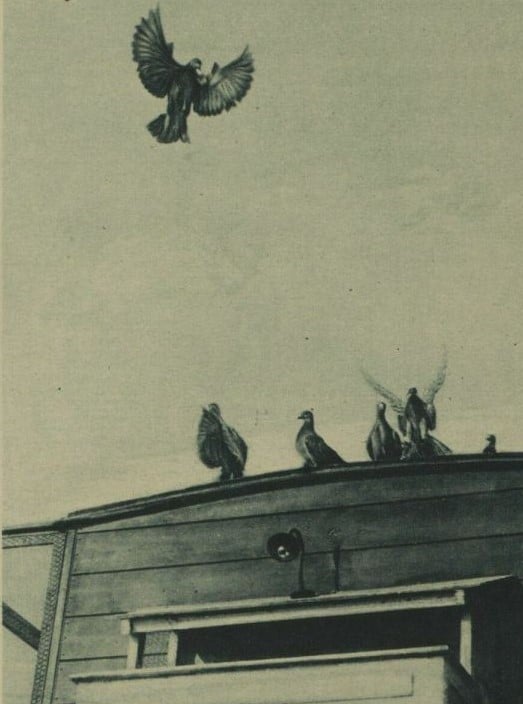 A pigeon about to alight onto its loft with a message from the trenches. The Illustrated London news, 1 December 1917, page 672
A pigeon about to alight onto its loft with a message from the trenches. The Illustrated London news, 1 December 1917, page 672
Further resources
Allen, Barbara, 2009, Pigeon, Reaktion Books, London
Humphries, Courtney, 2008, Superdove: how the pigeon took Manhattan…and the world, Smithsonian Books, Collins,
New York
Levi, Wendell Mitchell, 1945, The pigeon (2nd ed.), Wendell Mitchell Levi, Columbia, SC
‘Pigeons of war: the use of feathered messengers in military operations,’ Navy and army illustrated, 12 December 1914, p. 241
Wikipedia, Cher Ami, viewed 12 February 2021
World War I Centennial Commission, Finding the lost battalion: myths and legends, viewed 4 February 2021
References
- Osman, A H,[1928], Pigeons in the great war: a complete history of the carrier-pigeon service during the great war, 1914-1918, The Racing Pigeon Publishing Co. Ltd, London, p.18
- As above, p. 70
- As above, p. 65


Thanks for this incredible story.